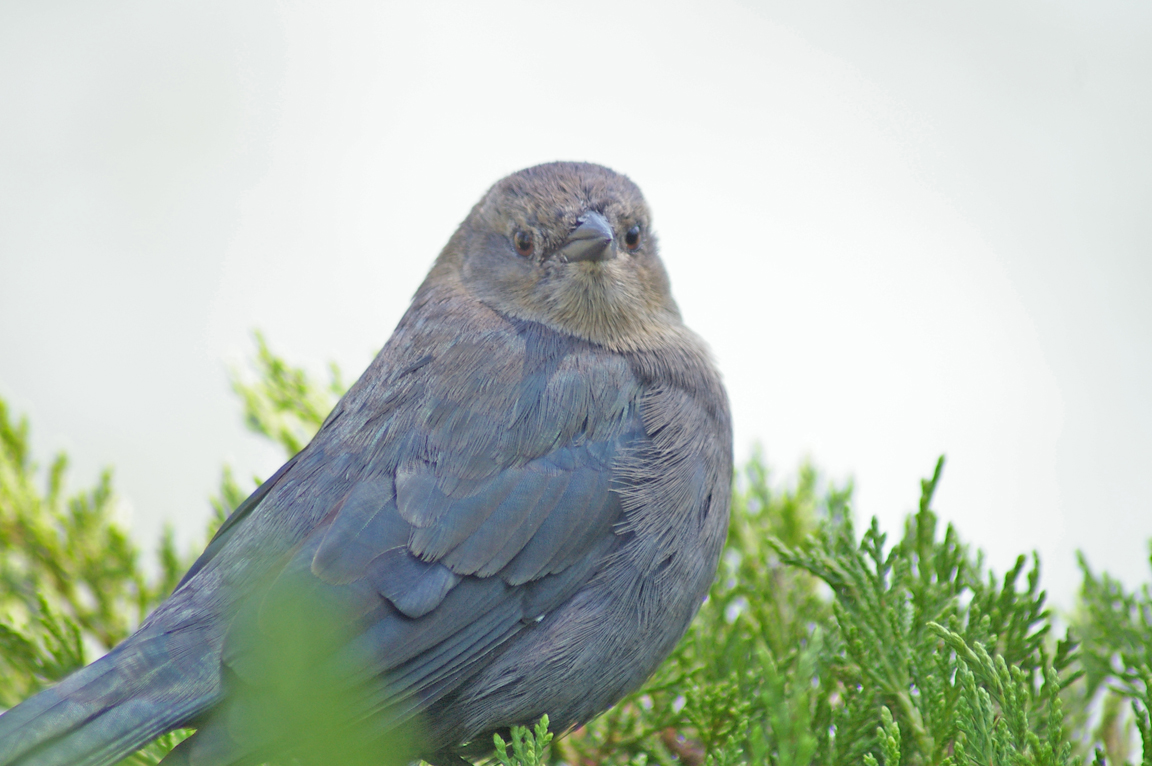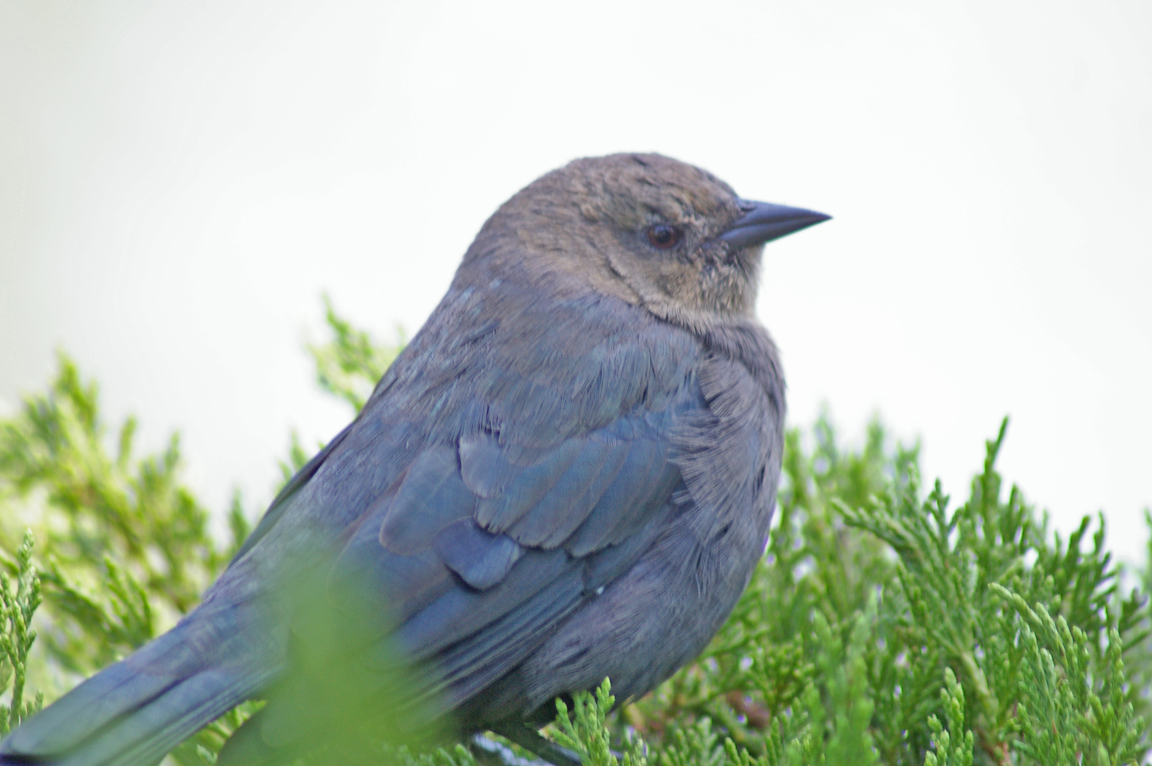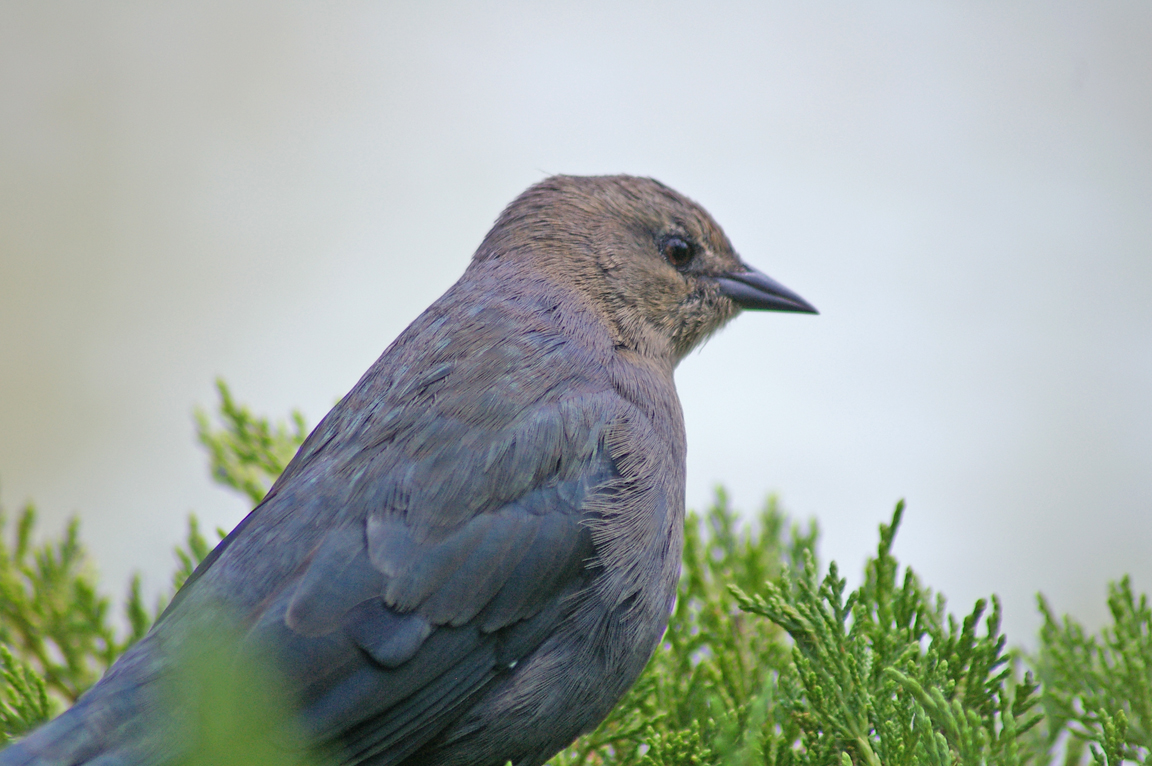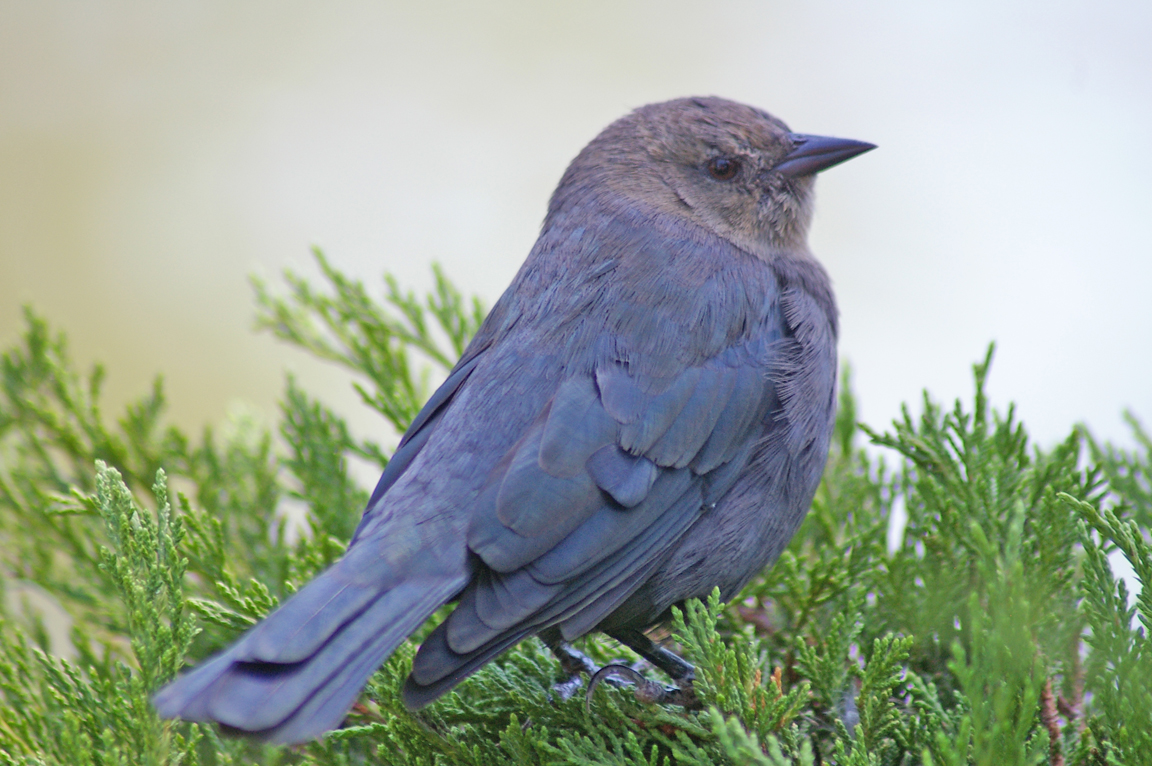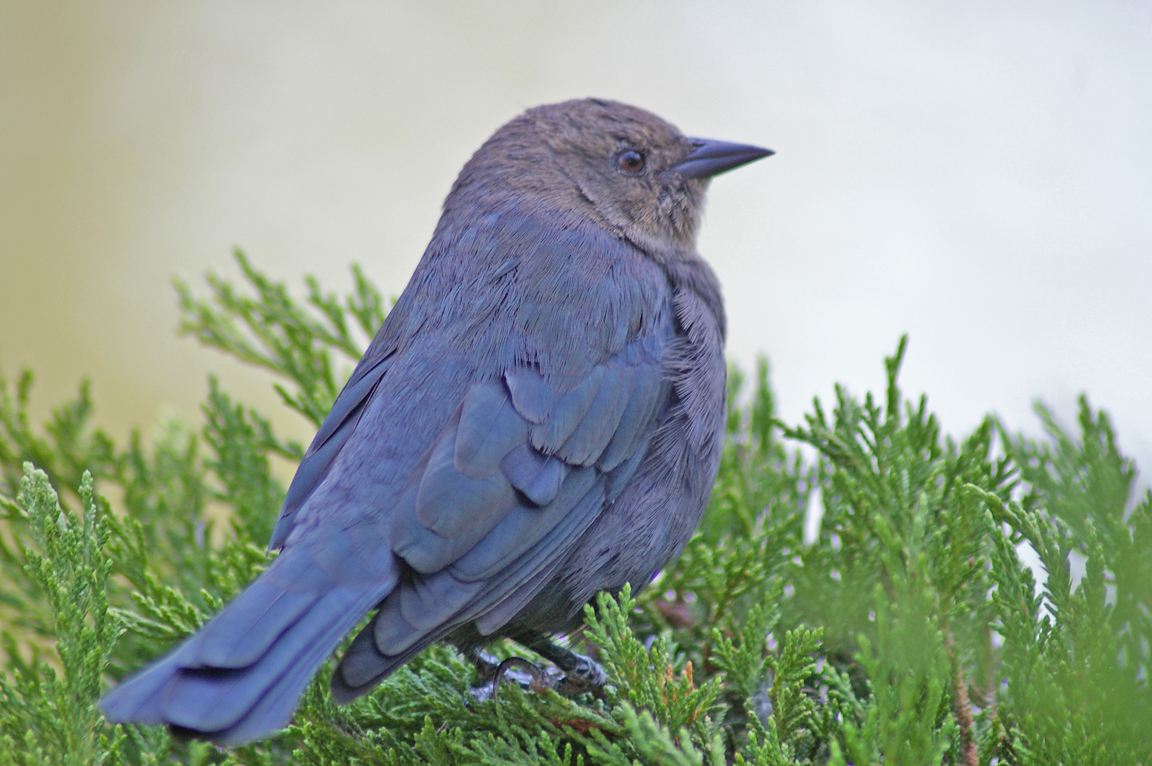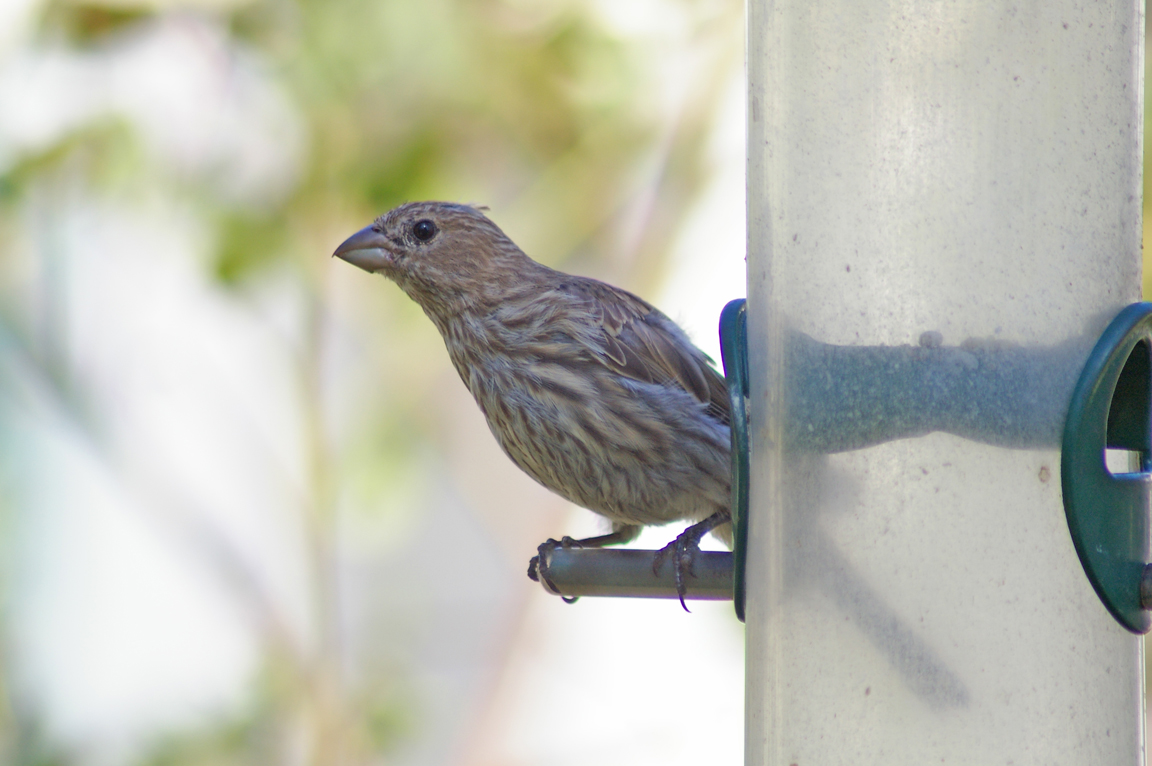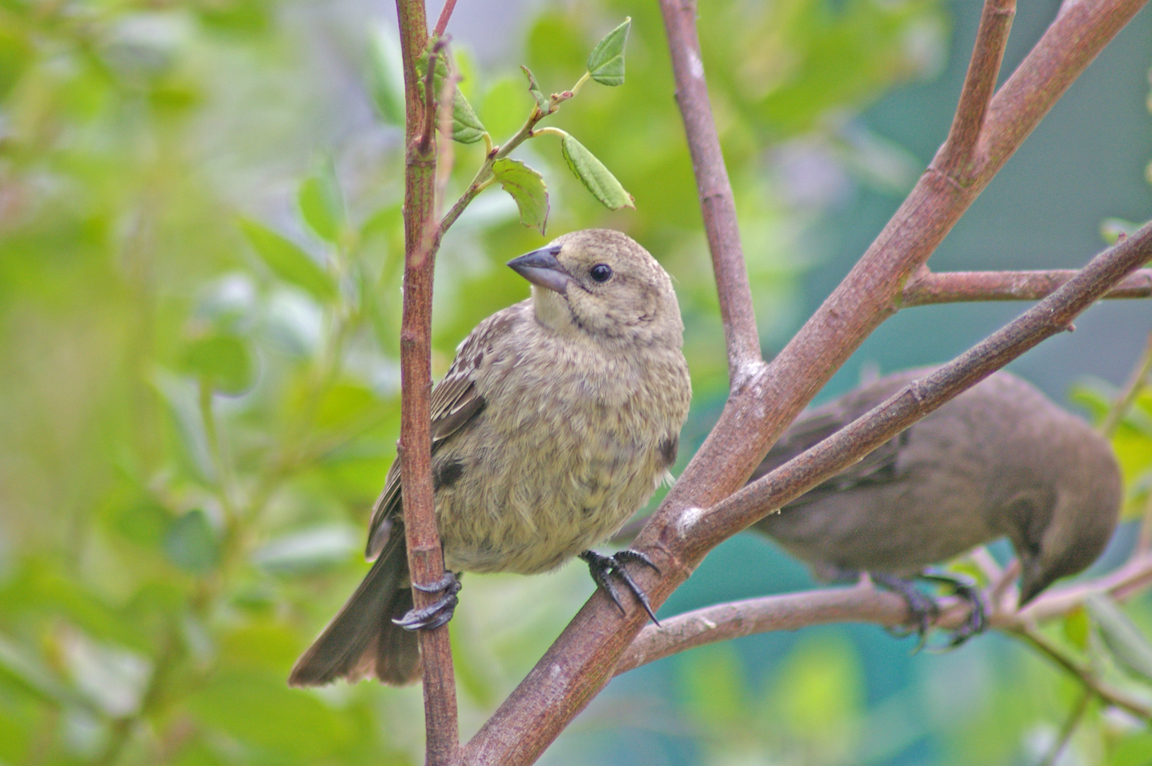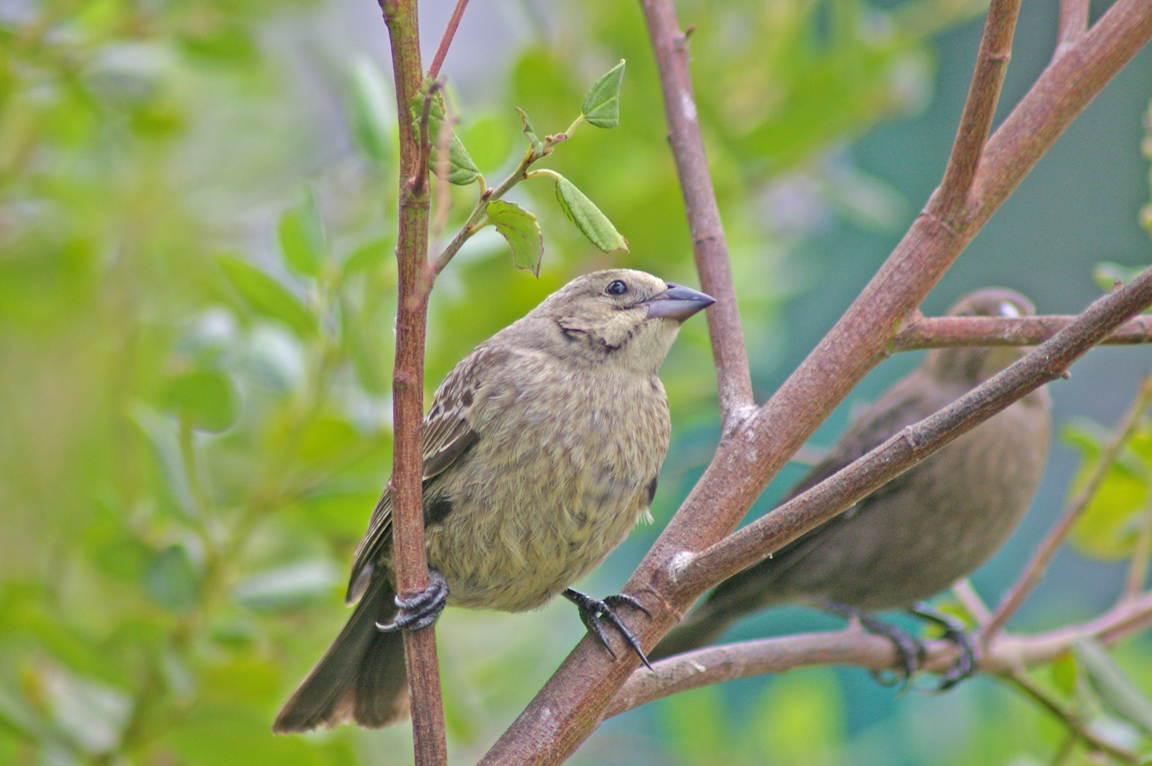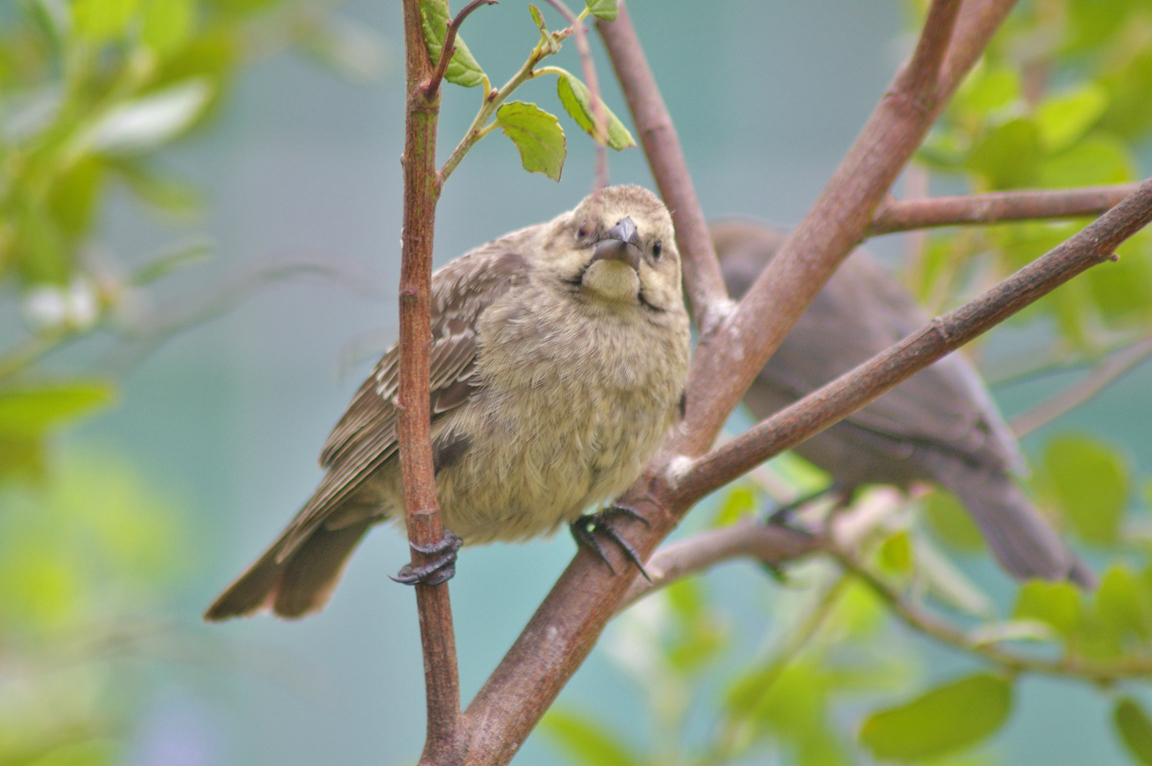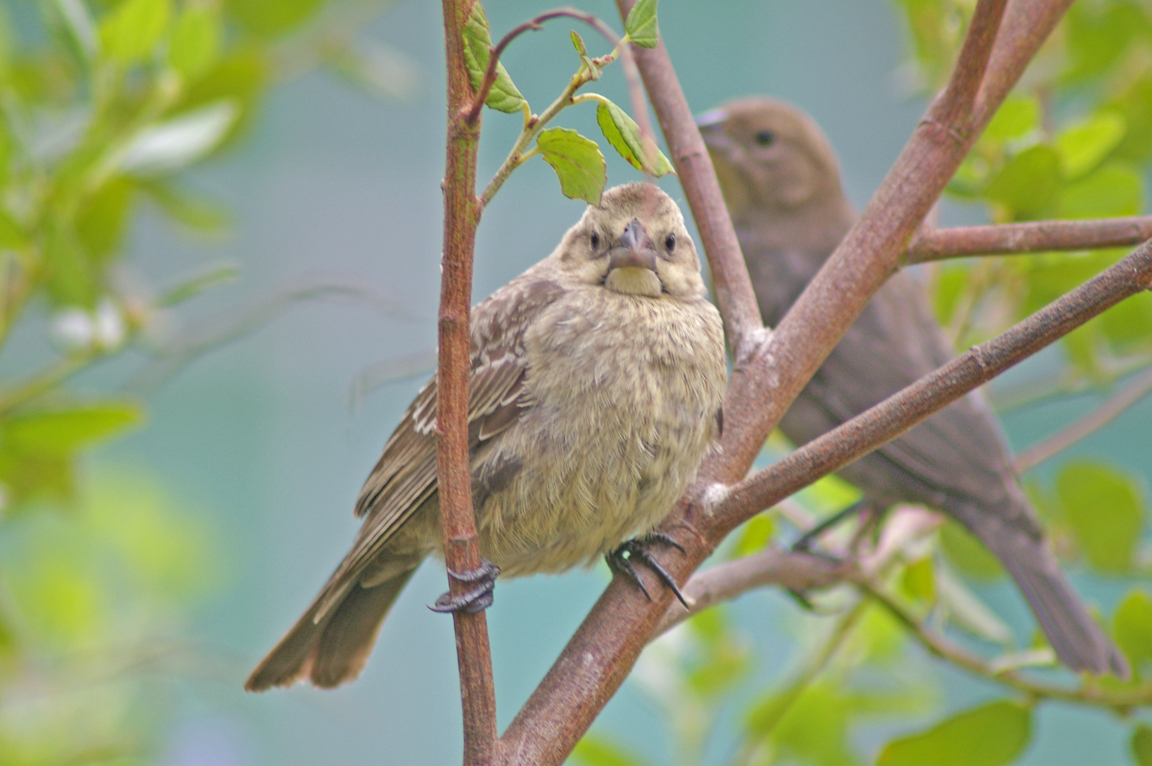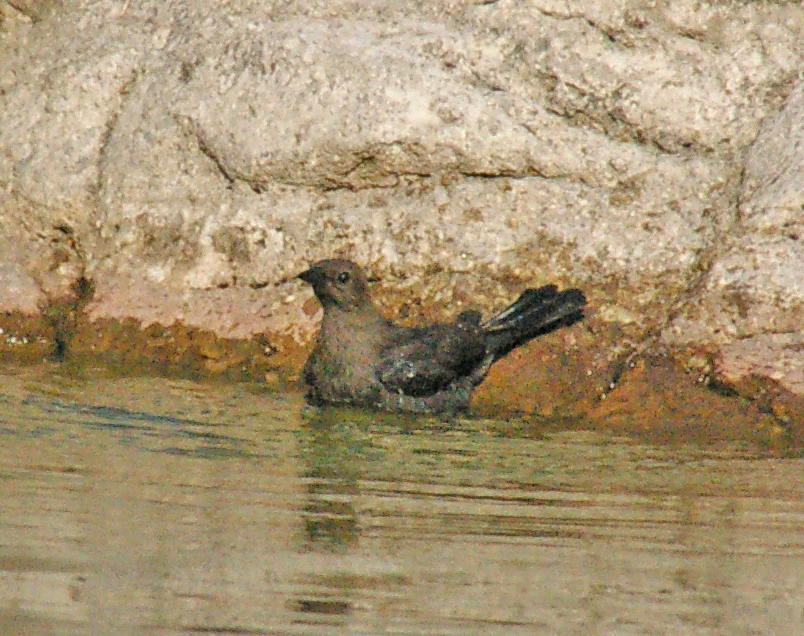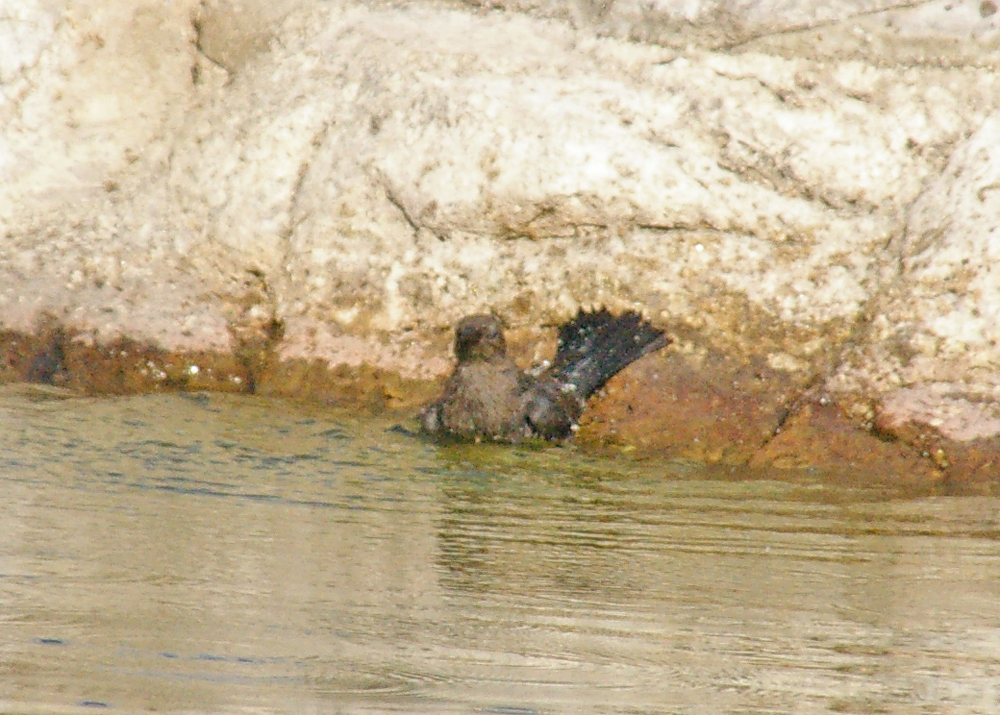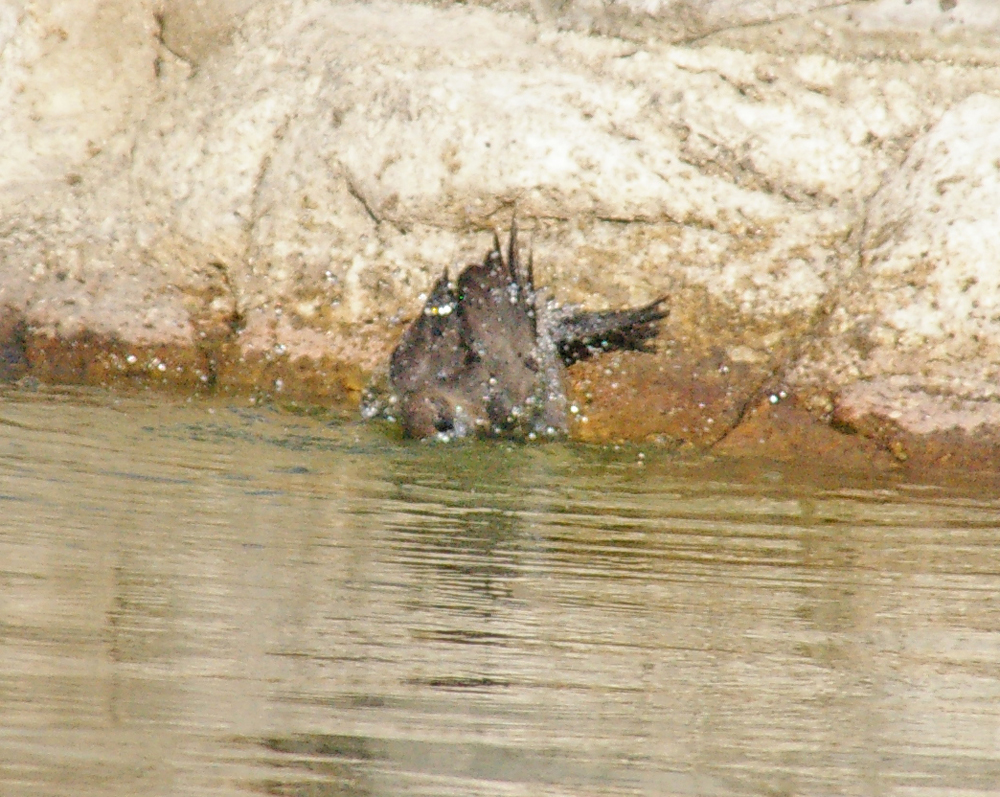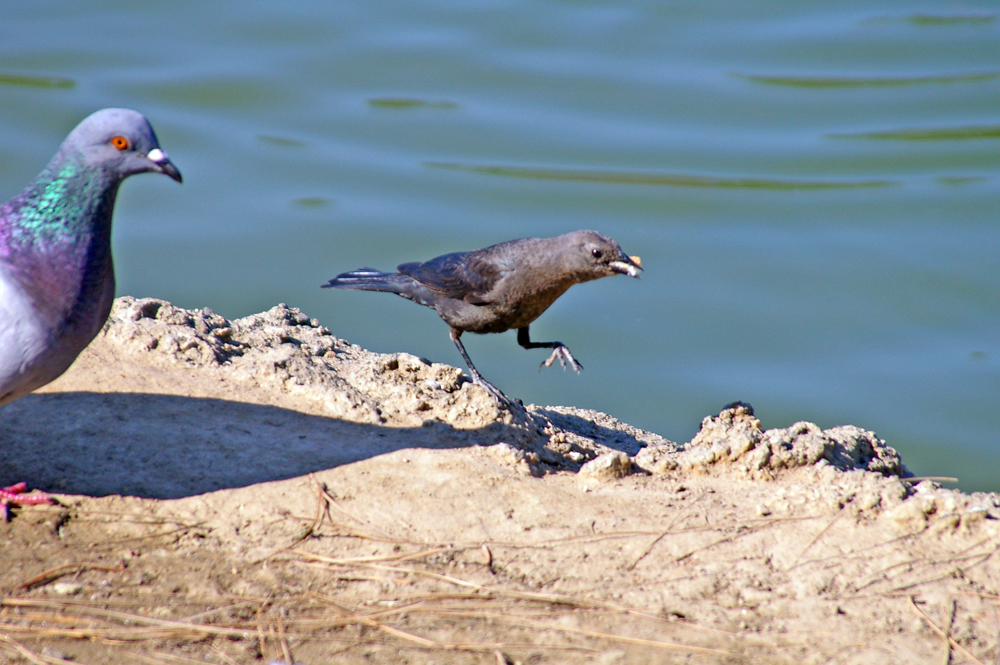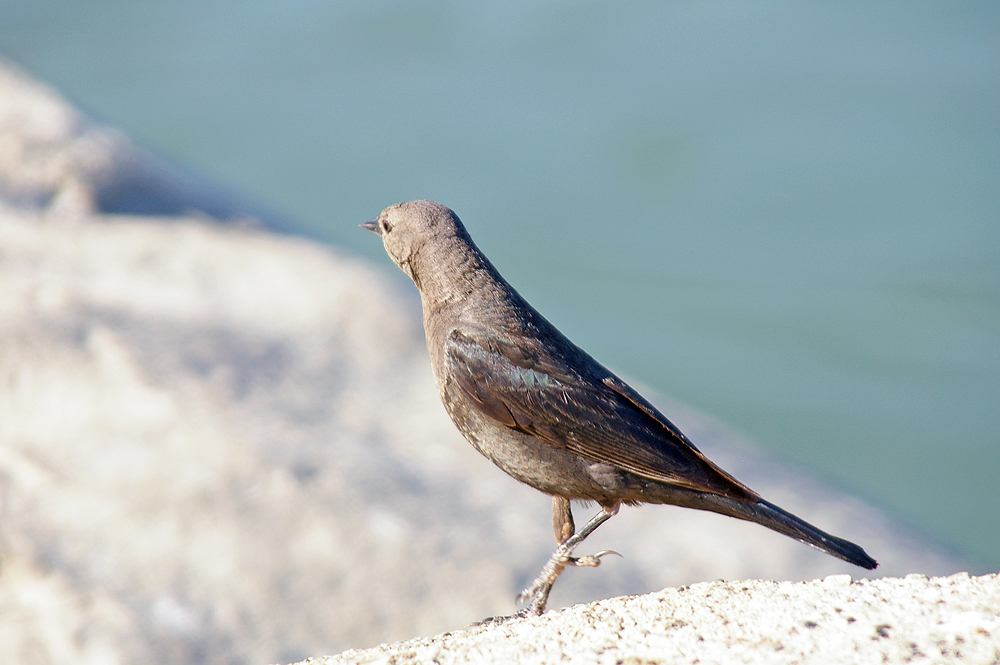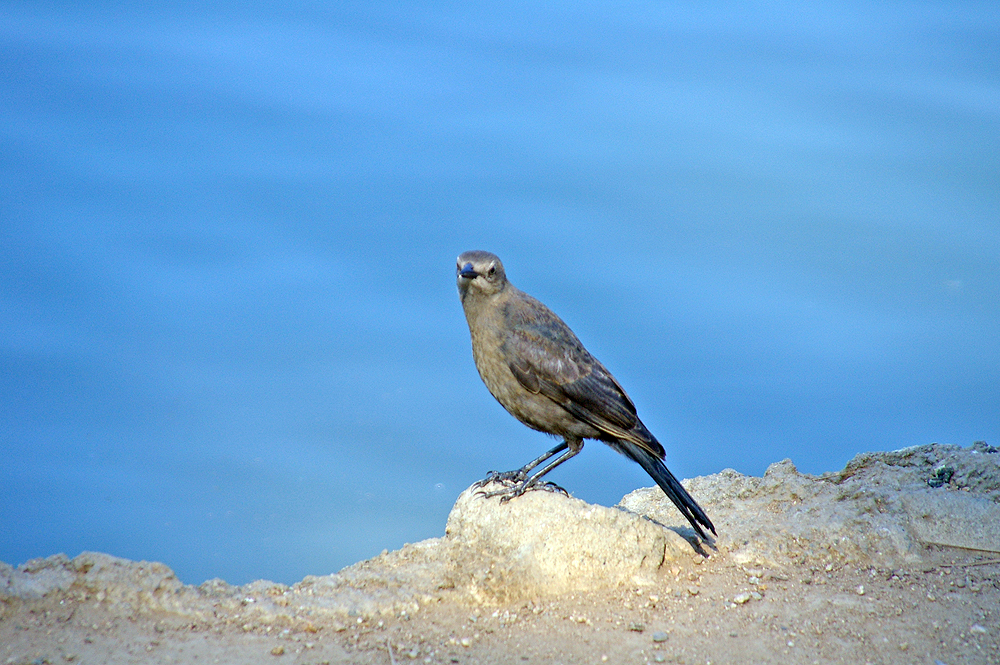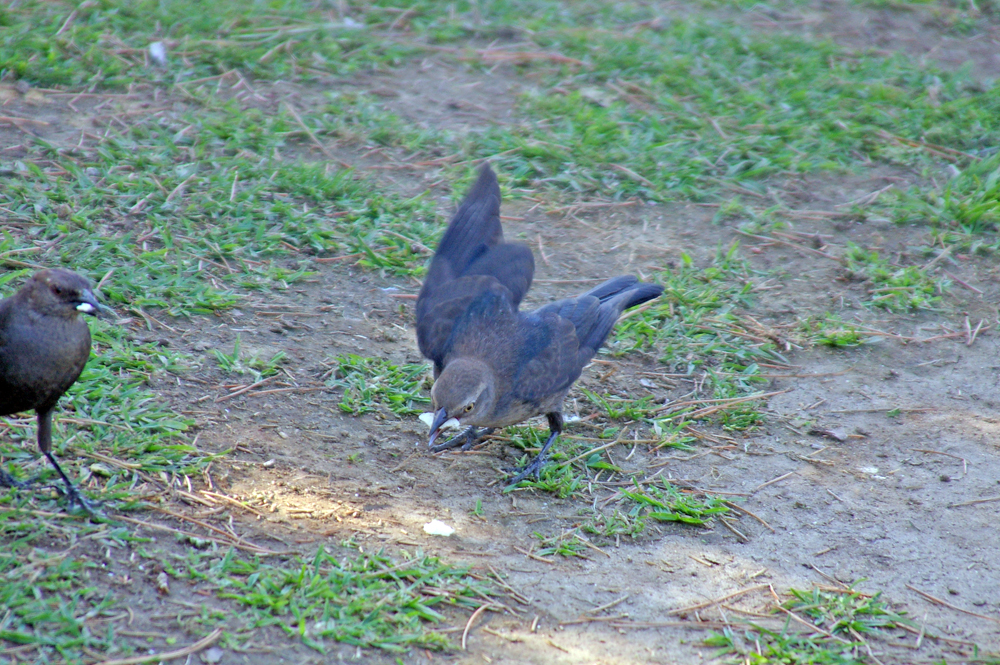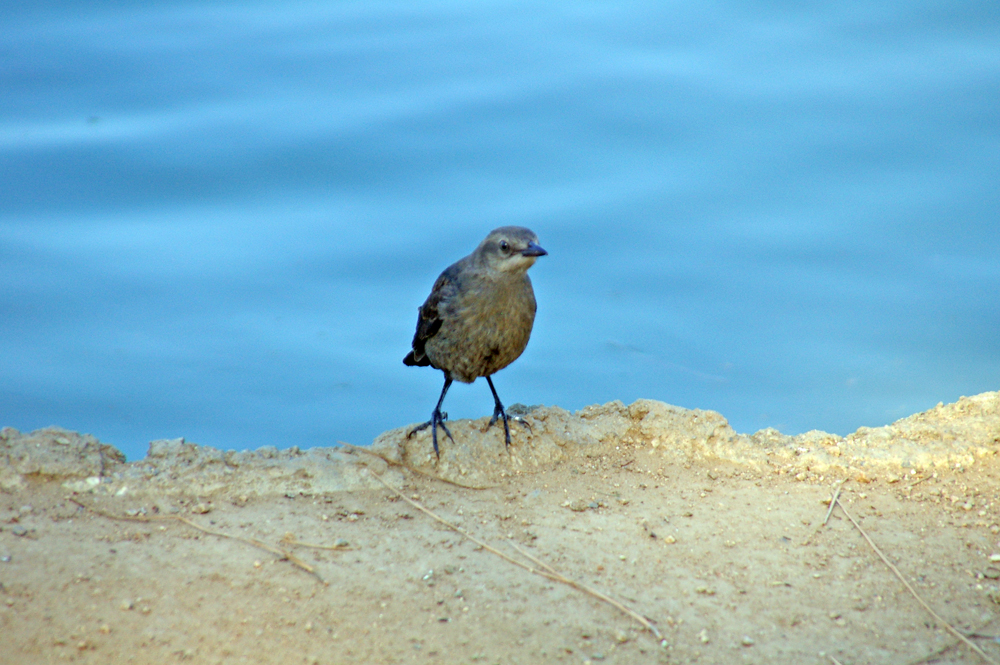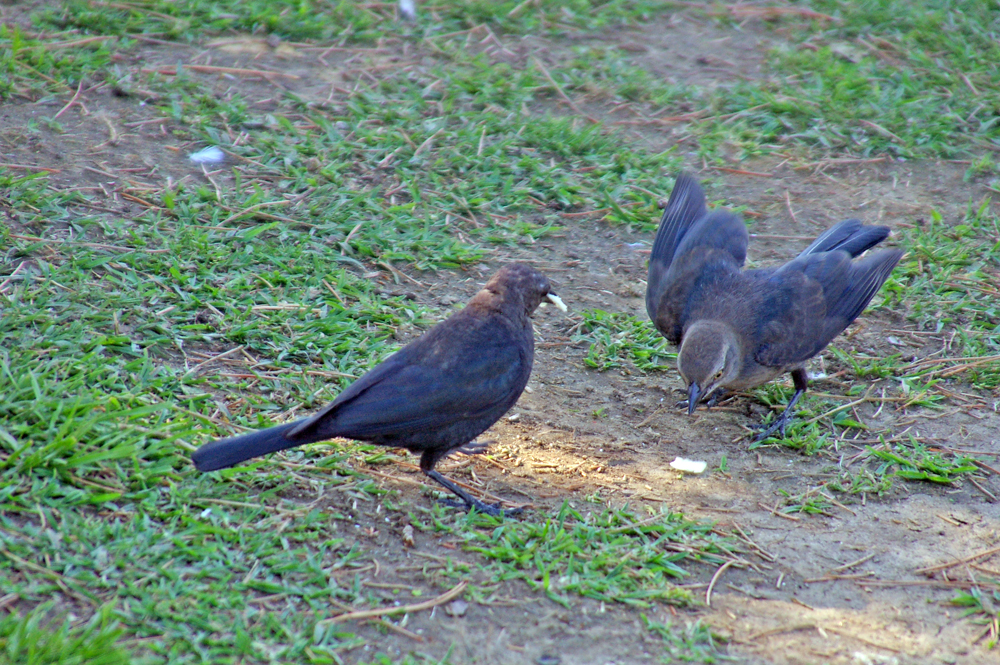|
|
|
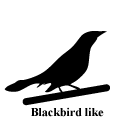 |
Brown-headed Cowbird
|
| Molothrus ater | |
The Brown-headed Cowbird is the only brood parasite common across North America. A female cowbird makes no nest of her own, but instead lays her eggs in the nests of other bird species, who then raise the young cowbirds.
Interesting Information
-
The Brown-headed Cowbird is the only brood parasite common across North America. A female cowbird makes no nest of her own, but instead lays her eggs in the nests of other bird species, who then raise the young cowbirds.
-
The Brown-headed Cowbird lays eggs in the nests of many different species of birds. Recent genetic analyses have shown that some female cowbirds will use a number of different hosts, but most females specialize on one particular host species.
-
Social relationships are difficult to figure out in birds that do not build nests, but male and female Brown-headed Cowbirds are not monogamous. Genetic analyses show that males and females have several different mates within a single season.
Description
Adult Description
-
Size: 17-22 cm (7-9 in)
-
Wingspan: 28-36 cm (11-14 in)
-
Weight: 38-50 g (1.34-1.77 ounces)
-
Medium-sized songbird.
-
Medium-long tail.
-
Bill stout and pointed.
-
Male shiny black with brown head and neck.
-
Female dull gray-brown.
-
Eyes black.
-
Wings rather long and pointed.
-
Legs black.
Sex Differences
Male shiny black with brown head and neck, female plain gray-brown.
Male
Body, wings, and tail shiny black. Head, nape, and chest dull dark brown. Bill black. Legs black.
Female
Entirely grayish brown. Chest with dull streaks. Throat whitish. Suggestion of faint pale eyestripe. Bill gray.
Immature
Juvenile similar to female, but more distinctly streaked below. Males molting in fall may be patched black and brown.
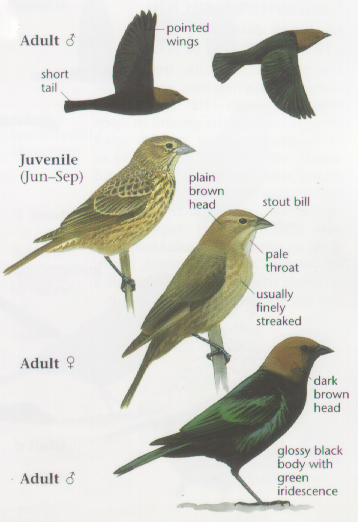
Photo taken from: The Sibley Field Guide by David Allen Sibley
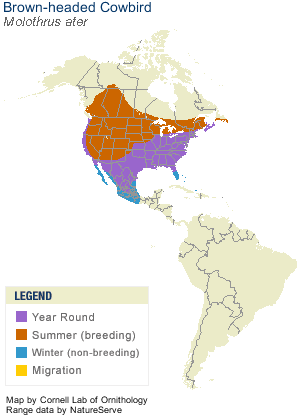
© 2003 Cornell Lab of Ornithology
|
Habitat |
|
Breeds in areas with grassland and low or scattered trees, such as woodland edges, brushy thickets, fields, prairies, pastures, orchards, and residential areas. |
|
Behavior |
|
Forages on ground, often in association with cows or horses. Outside of breeding season, forages in large flocks with other blackbirds. |
|
Food |
|
Seeds and arthropods. |
Taxonomy
| Kingdom: | Animalia |
| Phylum: | Chordata |
| Subphylum: | Vertebrata |
| Class: | Aves |
| Order: | Passeriformes |
| Family: | Icteridae |
| Genus: | Molothrus |
| Species: | Molothrus ater |
| Subspecies: | Molothrus ater artemisiae |
| Molothrus ater ater | |
| Molothrus ater obscurus |
Similar Species |
|
|
Bird Sound |
|
Song a pair of low "glug, glug" notes followed by slurred whistles ending on a very high pitch. Calls include a chatter and a whistled "fee-bee." |
|
Eggs look like this |
|
Photo taken from: ARCTOS Collaborative Collection Management Solution |
Videos
Brown-headed Cowbird
Up close and personal
